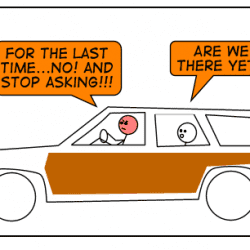Here’s an article that was recently featured on the WorshipConnection website about nontraditional church governance.
When is a church not a church?
My wife, Amy, and I started Milagro Christian Church four and a half years ago in Pueblo. We began in our living room, gathering around our coffee table or huddling by the fire with a handful of friends, trying to imagine what this thing called “church” might look like some day. I remember one week when no one came other than us. After feeling sufficiently sorry for ourselves, I informed Amy that she was not allowed to preach only to me, so we prayed, took communion and went out to dinner.
Just recently, Milagro, which is Spanish for “miracle,” was recognized by our region as an official congregation in good standing. That our church is still around in itself is a miracle, though I still don’t quite know what it means to be an official congregation.
The region agreed that, since we were worshipping 60 to 80 people a week and showed many typical signs of viability, we should charter. This chartering thing is something I guess all churches have to go through to graduate from being little-baby-make-believe churches to big-kid churches. It was nice to be recognized by the region, though, and it was a good cause for celebration within the region, so why not? Let’s charter – even though we don’t really know what it means.
It turns out that, in order to charter in our denomination, you are supposed to have 100 members on your roles. The thing is that we don’t have members in our church, and thus, we have no roles. I don’t really even know what a role is, although it evokes images of some very dauntingly official-looking scroll or something. It sounds like something people should sign with a big, fancy feather.
Not us: no members, no roles.
The good thing is that the region was so happy about our success that they overlooked their old policies and chartered us anyway. So now we’re official, which is nice, but we pretty much went back to doing things the same way we were doing them before.
That’s not entirely true, actually. To date, we’ve prided ourselves in doing things a little bit differently. Our Board is entirely volunteer, open to all who choose to participate at any given meeting. We have no committees or chairs (we actually do have chairs to sit on, but not the type that run meetings), and we have operated thus far without bylaws, budgets and the like. We’ve survived on passion and faith, and so far it’s worked, more or less.
Granted, Amy has foregone a significant chunk of her salary package for the last couple of years, and there have been a few things that have slipped through the cracks. So after almost five years of blissful anarchy, we’ve actually begun to get organized. We still don’t have members or elected Board folks, but we do have a Board Chair, and she is gradually nudging us toward having a financial plan – dare I say (gag), a budget.
I understand the need for all of this, and one thing I have come to realize is our post-institutional, plenary rejection of the old models of governance and congregational structure have left us somewhat adrift, once we reached a certain size. Believe it or not, there’s actually a reason for all that structure!
Problem is, too often, the people in charge have no idea what that reason is any more.
Church growth expert and author George Bullard speaks often about the model of the van, with the four passengers – Programs (P), Vision (V), Management (M) and Relationships (R) – each competing for the driver’s seat. We started as a big “V” church, driven by little more than a dream of what we might be. From there, as we gained a little bit of momentum and people actually came, we added a healthy dose of “R” to the recipe. As we had more and more kids, and as people wanted to do more to reach out to the community, study scripture and spend time together socially, “P” asked to cut in.
Now, though we’ve held it at arm’s-length as long as we could, “M” is knocking at the door, asking – if not demanding – to be let in.
Too often, established churches allow “M” to stay in the driver’s seat, focusing on sustainability, budgets and keeping the lights on more than feeding on prayerful vision. However, vision, relationships and even programs lack some real teeth without strong management. In reacting against something we wanted to avoid, we actually were holding ourselves back.
So how do we let “M” into the circle of trust without it taking over? After all, “M” has a time-tested reputation for doing just that. Do I really want a worship committee (just typing the “C” word makes me a little nauseated) telling me how church should look and feel? Our “y’all come” approach to letting anyone who is willing to help out has served us well, at least up to now. But is it time for a change?
Bullard’s contention is not that progressive, post-institutional, emergent churches have to reject “M” outright; in fact, he stresses that good management is a critical part of a successful organization. It may not look exactly the same as it’s been done before, but ideally, it serves a necessary purpose.
At Milagro, we’ve agreed to let “M” play ball, but we’re clear on keeping him out of the driver’s seat. A couple of times, when we started to get big enough that Amy and I couldn’t talk to everyone after worship on Sunday, “R” reared its head and suggested that perhaps we were growing too fast. So far, “P” is too young to drive in our faith community, but I’m sure the day will come when she’ll try to grab the keys when we’re not looking.
The key to our long-term sustainability, effectiveness and congregational health is keeping Vision at the helm. Though the region may struggle to redefine what it means to be a congregation as churches continue to reinvent community, I’m confident that the logistics of what you call attendees, worshippers, members, committees or what have you is not what make a church a church.
A church can take on many wonderful forms, but when Vision takes a back seat, that’s when it really begins to look like something other than what it was created to be.











